Full steam ahead for healthy food
Steaming food is quick, healthy and flexible.
Around the world, people have been cooking food with steam for thousands of years. Delicious dishes can be made with minimum preparation and attention.
Unlike boiling or frying, which can result in the loss of juices and moisture, steaming food can best preserve the original, umami flavor as well as the nutrients.
In ancient China, steaming was a very common method of cooking meat. In the Yuan Dynasty (1271-1368) there was a wintertime favorite called zhanzhengyang, mutton steamed in a bowl.
Preparation was simple: Fresh mutton is first steamed with scallion, ginger, salt and water, and the bowl is covered and steamed until the meat turned slightly white. A sauce of yellow wine, vinegar and fermented soy bean paste was added, then it is steamed on low heat for two hours.
The mutton cooked in sealed containers could keep all the juices and flavors, the vinegar helped the meat to soften and yellow wine removed the mutton smell and taste.
Because the steam can cook food thoroughly and no turning or stirring is required during the process, the shape and integrity of delicate ingredients can be kept.
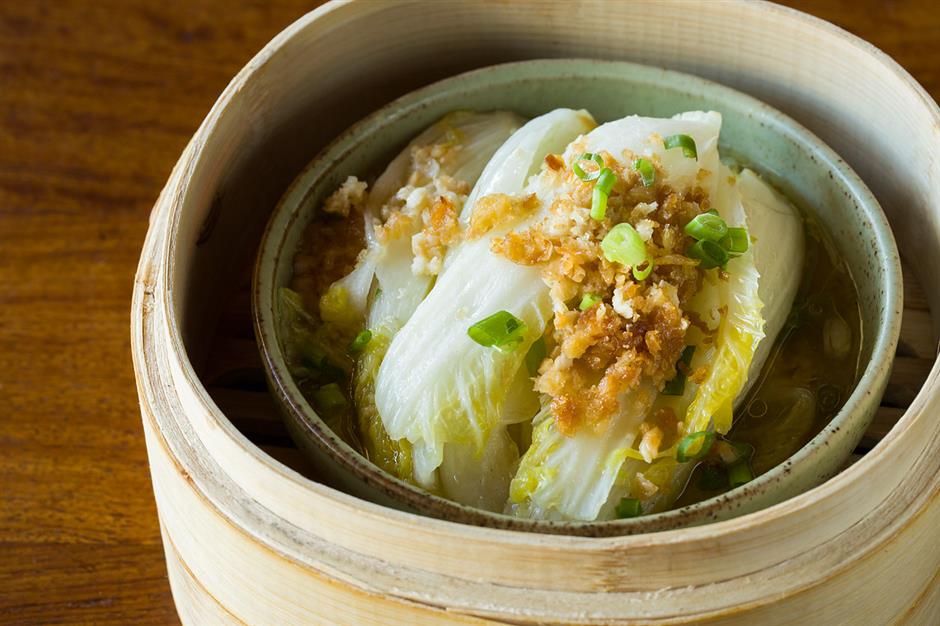
Steamed Chinese cabbage.
Cooking with steam
The technique of steaming food emphasizes two things, the quality of ingredients and timing.
Qingzheng, which translates into plain steaming, is a method that steams food directly, with or without advance preparation such as seasoning, brining or marinating. It’s regarded as a very healthy approach and fresh ingredients including vegetables, meats and seafood can all be steamed to make delicious dishes.
Fresh fish from the market can be steamed with some ginger and scallion, then add the seasoned soy sauce and splash a little bit of sizzling oil. The fish is very tender and flavorful, and steaming is a very convenient method that doesn’t require too much preparations.
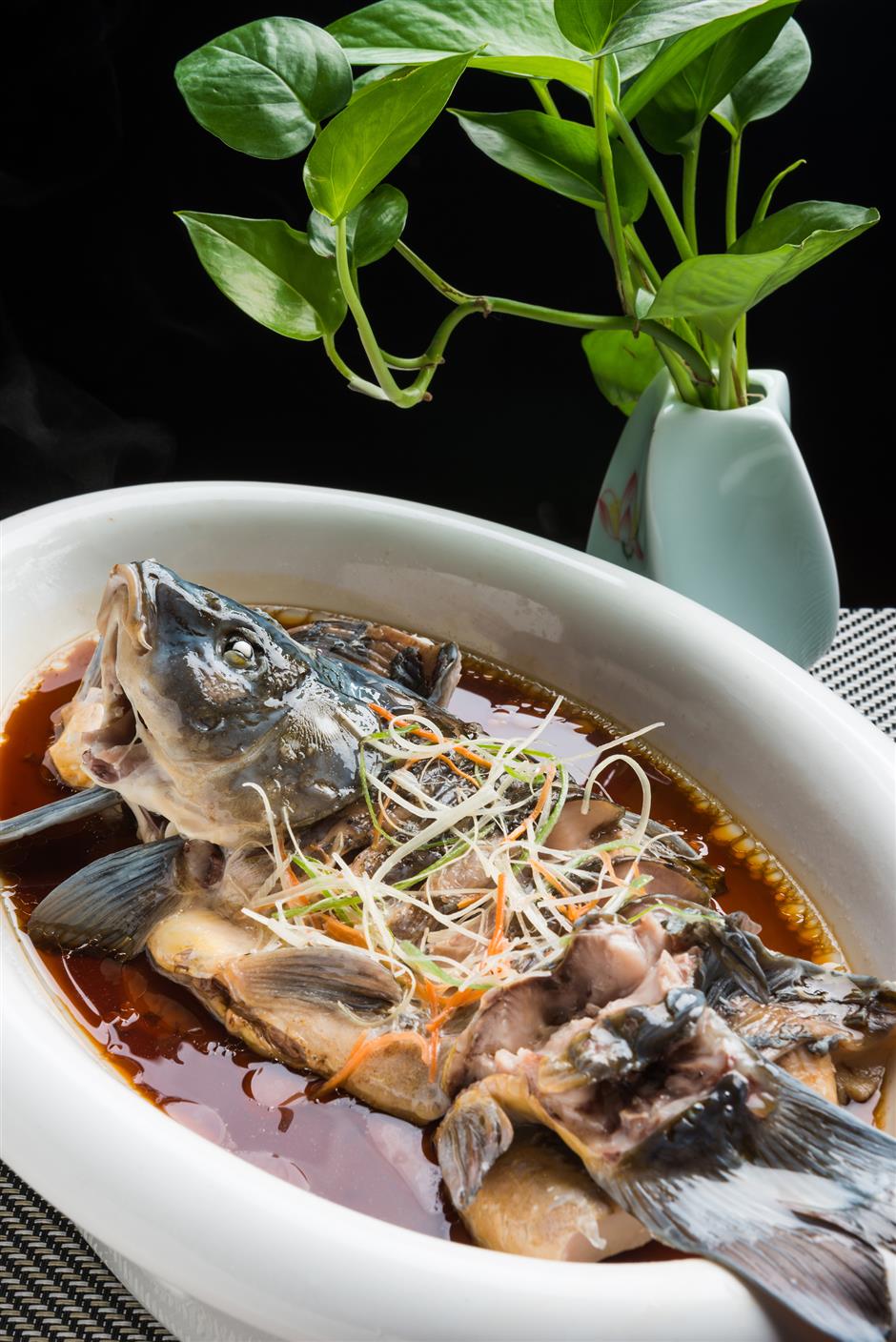
Steamed fish.
A vegetarian favorite is steamed baby Chinese cabbage with vermicelli and garlic paste.
The sweet and juicy Chinese cabbage softens quickly when cooked with steam, and the vermicelli will soak up the delicious juice and garlic flavor.
A trick to make better qingzheng dishes is to bring the water to boil before placing the food inside the steamer. It’s easy to control the cooking time and avoid overcooking the fresh ingredients.
Cured meats are traditional delicacies in Hunan Province, and a signature dish of the local cuisine is steaming different kinds of cured meats, such as pork, chicken and fish, together on one plate.
Fenzheng, on the other hand, is a more unique way to steam food. The meats and vegetables are coated with a layer of rice flour, which not only seals in the delicious juices but also helps the ingredients stay soft and velvety in texture.
The rice flour used in fenzheng dishes is made by stir-frying the rice with star anise and peppercorns in a non-stick pan over a low heat. When the rice turns light yellow, everything is ground up in a food processor.
The meats are marinated with ginger, cooking wine and green onion in advance, then mixed with dark soy sauce, oyster sauce, sugar and salt.
The marinated meats are coated with the spiced rice flour, making sure they are evenly covered. Steam in a pressure cooker for 30 minutes and it’s ready to serve.
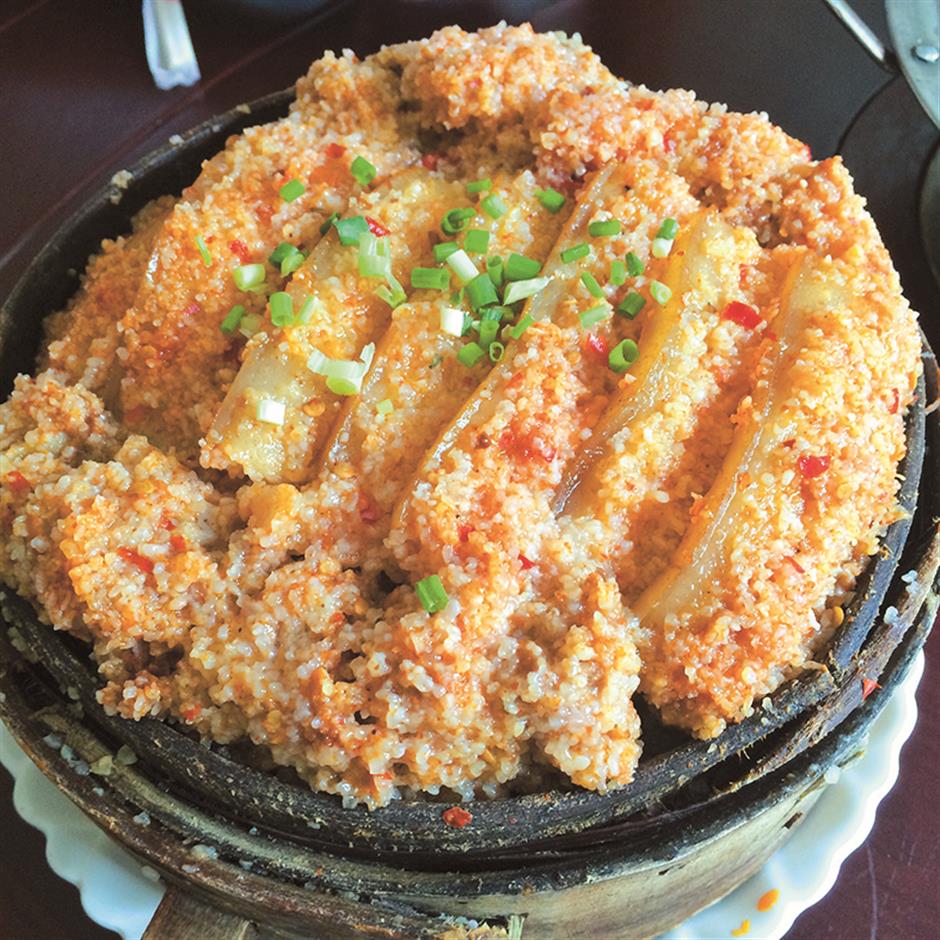
Steamed pork with rice flour.
Regular wheat flour is also used in steamed dishes, such as coating thin shreds of carrot, white radish, sophora flowers and more with flour and steam to cook. They are usually served with garlic flavored dressing.
Pearl meatball is a dish that’s especially popular with children. The small meatballs made of pork or chicken are coated with glutinous rice which is soaked in water in advance, then simply steamed until fully cooked.
Kouzheng is a method that arranges sliced ingredients in a bowl according to certain order and then steamed to cook. When the bowl is flipped onto a plate, the content will still remain round shaped.
A classic dish is steamed pork belly with preserved vegetable, which is often served at family reunion dinners on Chinese New Year’s Eve.
The pork belly meat is first boiled in water with ginger and simple spices to remove excess blood and smell, the meat is then rubbed with dark soy sauce and lightly fried in a pan until the skin turns golden. The rehydrated preserved vegetable is sauteed with light soy sauce, salt and sugar.
Slice the pork belly meat and arrange neatly in a bowl with the skin side down, then layer the preserved vegetable on top and steam in a pressure cooker for around 30 minutes, tilt the bowl to filter out the excess juice, then cover the bowl with a plate and flip. The dish is best enjoyed with steamed rice.
Another popular dish is steamed pork belly with taro, where the thick slices of taro and meat are arranged alternatively.
You can also make small cups of soup in food steamers by placing all ingredients in bowls with lids on, which makes richer and more intense soups than boiling.
Double-layer milk custard, or shuangpinai, is a famous Cantonese dessert cooked using steam.

Double-layer milk custard.
Choose your food steamer
Food steamers made of bamboo are very traditional, like the small stackable bamboo steamers used to make Cantonese dim sum dishes.
Bamboo steamers cannot be used over direct heat but over a wok or pot, they are light and products made of top-quality bamboo can bring a unique bamboo aroma to the food as well.
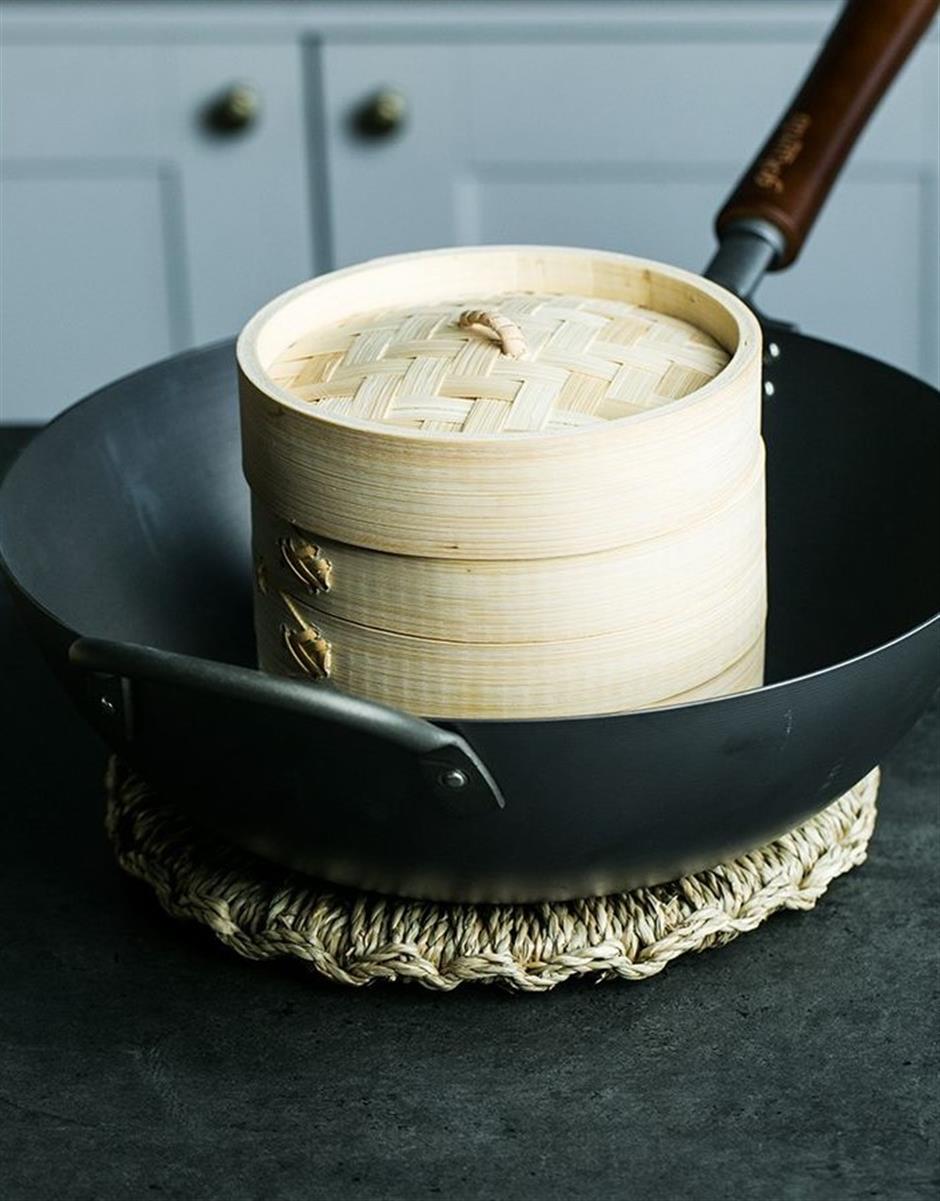
Bamboo food steamer.
Food steamers made of stainless steel are very efficient and easy to clean. They can accomplish heavy duty steaming tasks like making dozens of steamed buns at a time or cooking whole chicken and fish.
You can also turn your pot into a steamer by using a metal insert designed for the purpose. The expandable and adjustable tool, like the Stabil steamer insert sold in IKEA, can fit pots of different sizes conveniently.
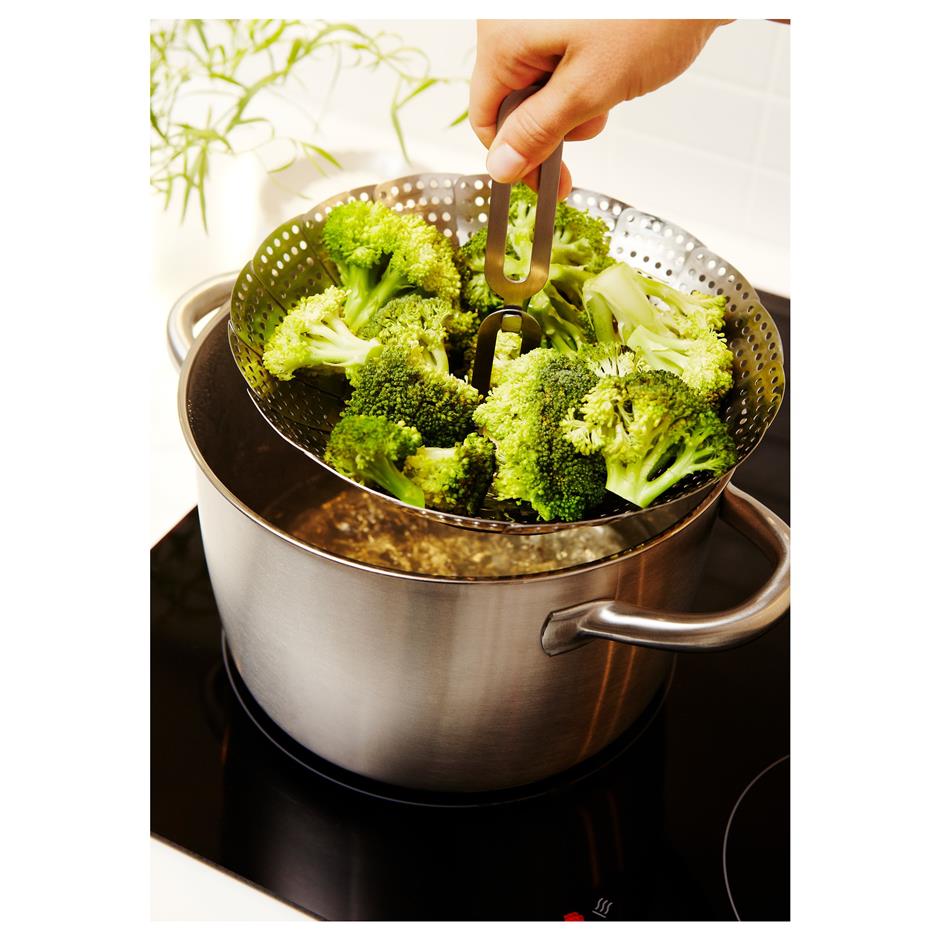
Steamer insert.
Electric steamers, usually made of stainless steel, are popular nowadays because they are easy to use and worry-free. Most models automatically shut off if the water boils dry to prevent accidents.
Many electric steamers are multi-functional, where one can stew or boil food with them as well.
Different settings such as fish, bone-in meat, vegetables and buns are available on the control panels. Some steamers can also defrost food.
If you are furnishing a new kitchen and have a higher budget, then a steam oven is a more advanced option.
It’s the same size as traditional ovens and can solve a lot of problems of traditional food steamers such as the large amount of vapor surrounding the kitchen, too much moisture which results in water dripping down from the lid or overcooking the food.
Specific temperatures can be set to cook different foods with precision, like 100 degrees Celsius for making steamed buns and 95 degrees for fish and vegetables.
With their large capacity and digital technology, the average price of a steam oven is 4,000 to 6,000 yuan (US$583 to 875).
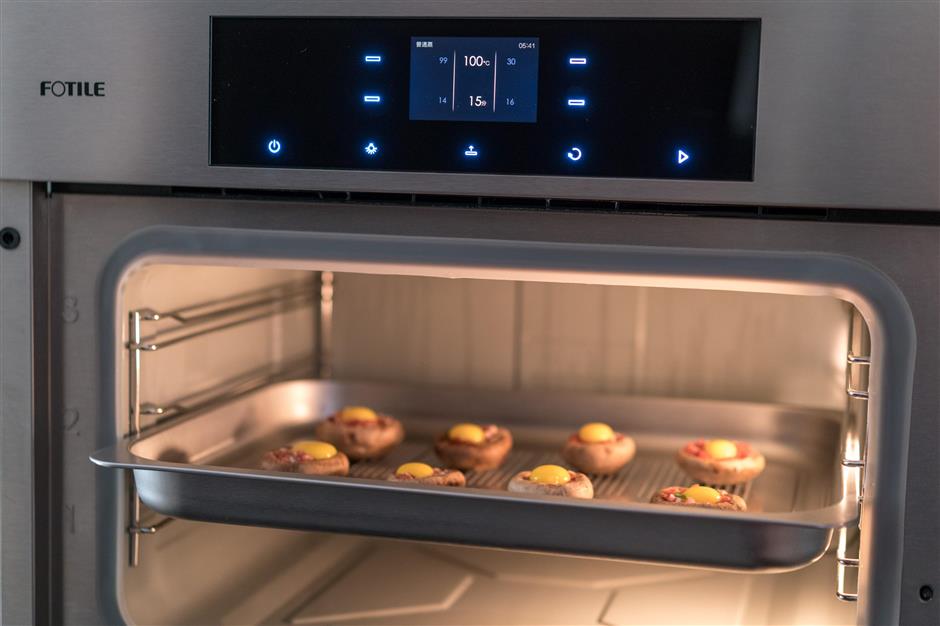
Steam oven.
An egg cooker, a cheap appliance designed to boil eggs efficiently, is also a mini steamer that can accomplish the tasks of cooking or warming up smaller portions of food in minutes.
Egg cookers usually have one to three heating plates and can cook different dishes at the same time.
The appliance can be plastic or stainless steel. It’s highly efficient, only a small amount of water is needed to steam food for up to 30 minutes. Most models automatically shut off when water boils dry, and they are easy to clean after use. Egg cookers are generally under 100 yuan.















